The new greenery is dazzling in May, and the weather has been hot. The sunlight is shining down on Monosus.
This month's reading group was a free-style group where people brought recommended books without deciding on a theme. Four members gathered on a sunny afternoon to take a break from work. This time, members from the Kamiyama satellite office also participated for the first time via video conference, so the atmosphere was a little different from usual.
The reading group started with excitement. Each person introduced a book in 5 minutes.
Books to be introduced this time
- Susumu Sakurai (author) "Get fascinated! Edo Mathematics" Shueisha
- Jiro Ono (author) "Sushi Sukiyabashi Jiro" Shogakukan
- Izumi Kisara (author) "Last night's curry, tomorrow's bread" Kawade Shobo Shinsha
- Bunpei Yorito (author) "A Study of Pictures and Words: Thinking about 'Easy to Understand' Design" Bijutsu Shuppansha
The depth of "Japanese mathematics," an Edo period pastime.
Susumu Sakurai (author) "Get engrossed! Mathematics of the Edo Period"
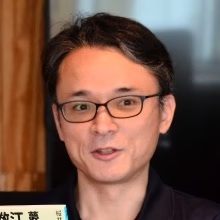
- Introduced by: Isamu Murakami
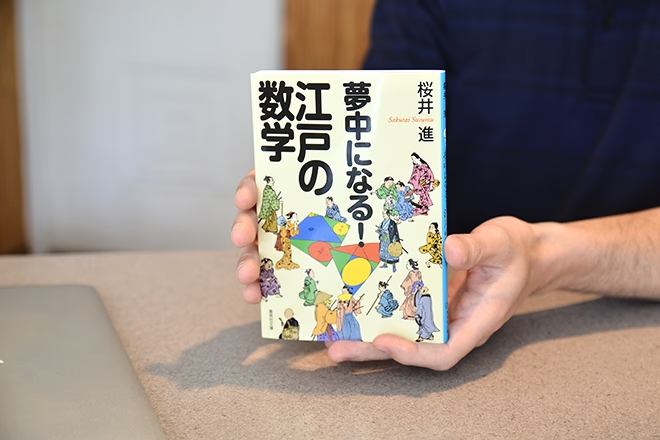
Susumu Sakurai (author) "Get engrossed! Edo mathematics" Shueisha (August 21, 2012) ( Amazon )
I brought a book about "Japanese mathematics" in the Edo period. I like the novel " Tenchi Meisatsu ," and the main character is a go player who also does Japanese mathematics. So I saw this book in a bookstore and thought it looked interesting.
Do you know what Japanese mathematics is? I think some of you may have done the "Tortoise and Crane Calculation" in elementary school, but that is also Japanese mathematics. At the time, I had no idea why we were doing it and hated math. After learning equations in junior high school, I thought, "Why not just use that to solve the problems?" (laughs)
But reading it now, I find it very interesting to see that it was cutting-edge learning that was on par with the West. At the beginning, there is a phrase by Takebe Katahiro, a genius Japanese mathematician, that says, "The heart of arithmetic..." The author says that rather than simply being a study, it was probably seen as one of the "ways" like the tea ceremony or kendo. Apparently, every household in the Edo period had a book on Japanese mathematics. It seems to have been one of the pursuits of refinement.

There are various practice problems at the end of the book, which is interesting. There are about 1,000 "Sangaku" (a picture frame containing a solved Japanese mathematics problem) that are dedicated to shrines across the country. That culture is also interesting.
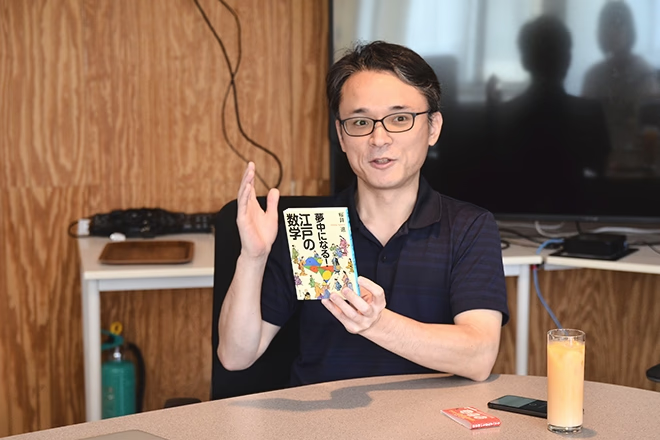
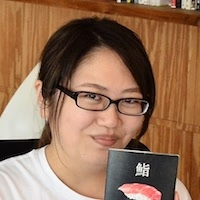 Dry
DryI also didn't understand the turtle and crane problem...I liked math though.
 Murakami
MurakamiYou add up the number of legs and heads of the vine and then... it's like thinking about a shape.
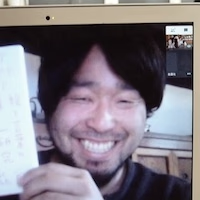 Sato
SatoI'm not very good at math so this seems a bit difficult to me.
 Murakami
MurakamiI think there are a lot of people who dislike math, but it's interesting to revisit it and see it in a different light.
I'd love to go someday! Let's go to a famous sushi restaurant.
"Sushi Sukiyabashi Jiro" by Jiro Ono

- Introduced by: Qian Yahu
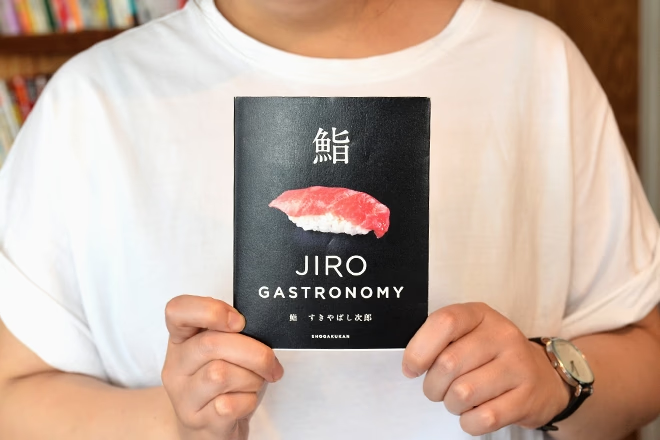
Ono Jiro (author) "Sushi Sukiyabashi Jiro" Shogakukan (September 12, 2014) ( Amazon )
I love sushi, so when I saw this cover in a bookstore, I was so happy that I bought it. It's a book about the super famous Ginza restaurant Sukiyabashi Jiro . It consists of three chapters: "Omakase Illustrated Guide" that explains each piece of sushi, "How to eat sushi deliciously" recommended by Jiro, and "Sukiyabashi Jiro User's Guide" that includes restaurant etiquette and how to make reservations.
"Omakase Zukan" has interesting explanations and cool photos, such as "This ingredient shows the skill of the craftsman, so it must be done carefully," and "Only one in 100 tuna can be used for Otoro." Even when sushi is served, I don't know what kind of fish it is, so I would like to study with this book and be able to tell at a glance.
What was interesting in the chapter on how to eat it was about ginger. Apparently the correct way to eat it is to dip the ginger in soy sauce and then spread it on the toppings. I had never heard that before. I tried it when I went to a conveyor-belt sushi restaurant, but I couldn't get the soy sauce to stick properly...it was a bit difficult (lol).
Also, it is written in both Japanese and English, so foreigners can enjoy it. The "Torisetsu" at the end of the page is very useful as it carefully explains how to make a reservation, etiquette at the store, dress code, etc. I would like to go to Jiro someday.

 Murakami
MurakamiIt's quite shocking to dip ginger in soy sauce...
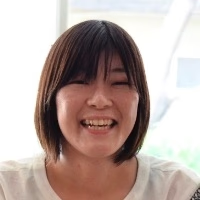 Standing side
Standing sideHow much is the omakase option?
 Dry
DryIt says it's priced from 30,000 yen, which is pretty pricey (lol). Apparently the order of the 20 pieces is decided on the morning of the day.
 Sato
SatoThe photos are great and it's interesting that it's written in both Japanese and English. I'm interested to see how it's explained in English.
A world that I have always loved and treasured.
"Last night's curry, tomorrow's bread" by Izumi Kisara

- Introduced by: Ayumi Tatewaki
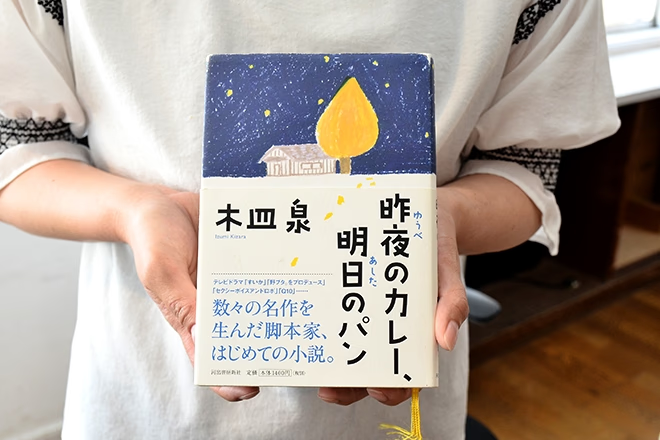
Izumi Kisara (author) "Last Night's Curry, Tomorrow's Bread" Kawade Shobo Shinsha (April 19, 2013) ( Amazon )
What I brought today is the first novel by screenwriter Izumi Kizara, "Last Night's Curry, Tomorrow's Bread." I've loved Kizara since I was in elementary school, and I've always loved her. She has written scripts for many TV dramas, including "Watermelon," "Nobuta wo Produce," and "Q10." They are a duo unit living in Kobe.
The cover of this novel says, "Even though it's sad, it can also make you feel happy," and that's absolutely true. The protagonist loses her husband at a young age, and even though it's a sad event, reading it makes you feel warm inside.
It's a heartwarming story about people who have suffered and lost loved ones, including the story of a childhood friend of the husband who suddenly lost the ability to smile, and the story of daily life living with the husband's father-in-law.
I fell in love with Kisara-san because of the drama "Watermelon." It's a story written for women who can't accept themselves, but I really love it. I also have the DVD, and I watch it endlessly whenever I'm worried or depressed about life. I really recommend it, so please watch the drama too (laughs).
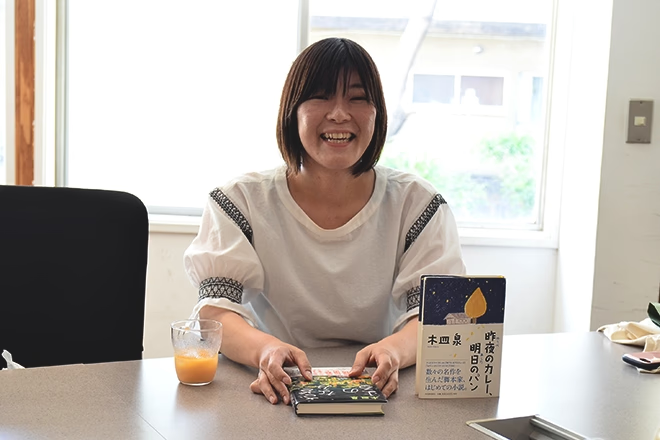
 Dry
DryIt was written by a married couple.
 Murakami
MurakamiThe unit's name is "Kisara Izumi." I've never heard of it before.
 Standing side
Standing sideI think I've watched the drama about 20 to 30 times now. There's even a bot that collects Kizara-san's quotes ( Kizara Izumi's famous lines ). This is also great... am I getting too obsessed?
 Murakami
MurakamiI have things I watch when I'm feeling down, and I think that's a good thing.
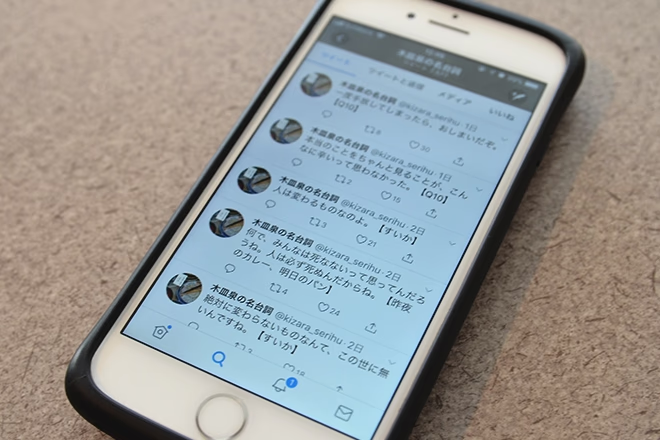
When in doubt, pick up this bible of design thinking.
Bunpei Yorifuji (author) "A Study of Pictures and Words: Thinking about Easy-to-Understand Design"

- Introduced by: Hikaru Sato
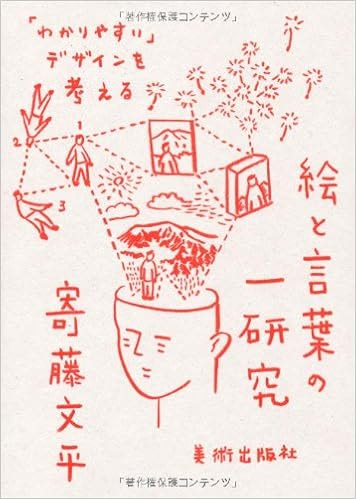
Bunpei Yorifuji (author) "A Study of Pictures and Words: Thinking about 'Easy to Understand' Design" Bijutsu Shuppansha ( Amazon )
I brought the book I've been reading the most since I was a student. It's "A Study of Pictures and Words: Thinking About Easy-to-Understand Design" by art director Bunpei Yorifuji. It's a book that studies the relationship between pictures and words, and how does the expression change when it becomes a simple "picture" or a simple "word", or when it becomes "picture + word". It introduces various combinations and patterns, and is very helpful.
For example, can you see this?
(Participating via video conference from the Kamiyama satellite office)
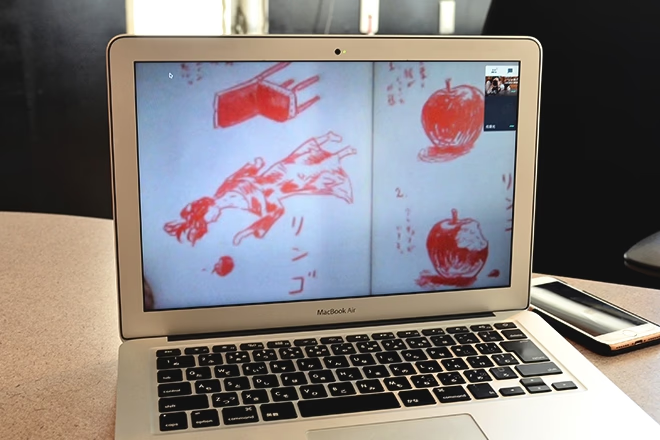
It's difficult through a screen (laughs).
For example, there is a word, "apple," and a picture of a round apple. Just by changing the picture to one of a bitten apple, it creates a little distance...the meaning of the word changes. Furthermore, if there is a picture of a woman who has fallen, an even different meaning emerges. Thinking about the distance between words and pictures is very helpful.
I majored in graphic design when I was a student, so I really reread it frequently. For example, I still reread it from time to time to think about examples of pattern-making in bookbinding design and how to present information. This is a book I would highly recommend to anyone involved in expression.

 Murakami
MurakamiIt's amazing that you've been reading it since your student days.
 Sato
SatoI bought the first edition... and it's been a great reference for my thoughts ever since.
 Dry
DryI've seen this artist's art before! I was interested in " Death Catalogue " at the bookstore.
 Sato
SatoHe is well known for appearing in various advertisements, such as JR's ``Let's do it at home!'' and JT's ``Adult Tobacco Training Course.''
After the reading group
Edo period learning, famous sushi restaurants, heartwarming stories, and design bibles. We have collected recommended books on various themes, each with their own unique perspective. Sometimes it's fun to introduce books in a free style.
I wonder what the next theme will be. See you next time!

